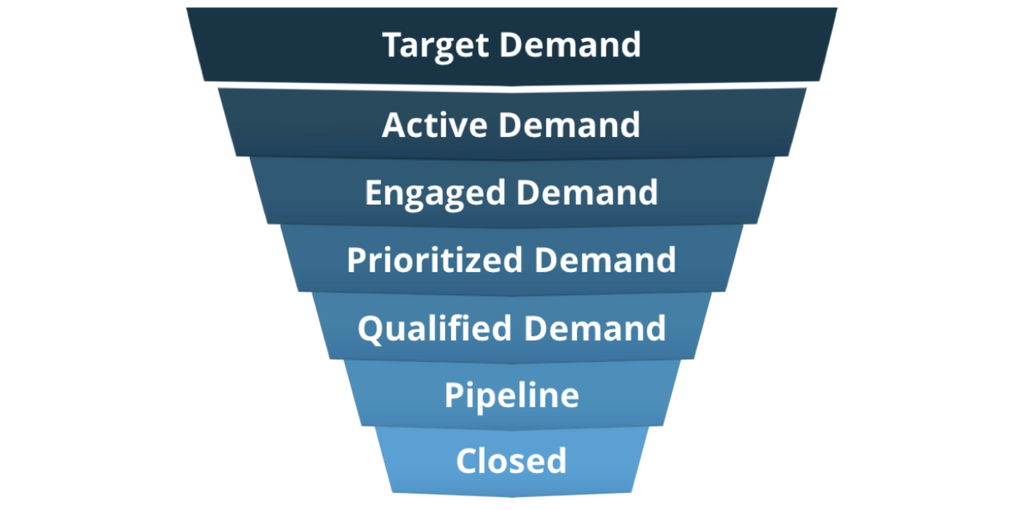
Every year there is a lot of talk around the SiriusDecisions summit. This premiere B2B conference attracts those in sales, marketing and product for a few days away from the office. Sessions like “Account-Based Marketing: What the Future Holds” and “Extending Personas into the Post-Sale Customer Lifecycle” give attendees the opportunity to engage and learn from experts and peers.
With this year’s summit came the introduction of the SiriusDecisions Demand Unit Waterfall. SiriusDecisions originally launched Demand Waterfall back in 2006 and was quickly adopted by many B2B organizations and their agencies as a template for defining key stages in the purchase process. Further changes took place in 2012 as advances in technology required shifts in tactics and strategies with the intent to enable teams to track their lead flow into different buckets.
Now in 2017, we’ve had to evolve again. Created by Terry Flaherty and Kerry Cunningham, the Demand Unit Waterfall came in part from recent technological advances giving the industry the ability to identify prospects showing intent and interest in our client’s products and services without even talking to them. This allowed for the opportunity to revisit previous versions and give a fresh perspective.
Each stage of the unit, helps us to remain focused and strategize at each stop so we are talking to prospects about the right topic at the right time whether it is via demand generation efforts or brand awareness.
- Target Demand helps remind us that we first need to understand who our audience is in the first place and how vast that audience might be.
- Active Demand Stage is the point at which to take a step back and due further research in an attempt to discover if those accounts are showing any need or buying attention. Many companies now are focused on this stage and helping marketers and agencies identify accounts that are at this stage.
- Engaged Demand happens when a prospects interacts with the advertiser. This occurs if they respond to any marketing or sales type stimulus in anyway.
- Prioritized Demand is generally when an advertiser’s sales team becomes engaged with that prospect once that prospect’s level of engagement has reached a point where they have shown enough interest to move the conversation forward.
- Qualified Demand occurs when we know the prospect’s budget, authority, need and timing for these products and/or services.
- Pipeline and Closed round out the process and is where each advertiser and agency wants 100% of their efforts to result in.
The beauty of the Demand Unit Waterfall, as I see it, is to have a tool to closely analyze your prospects, to force yourself to stop considering them all as one segment and to more intelligently target them with the right message at the right time.

J A Y B A R D E N
Associate Media Director
